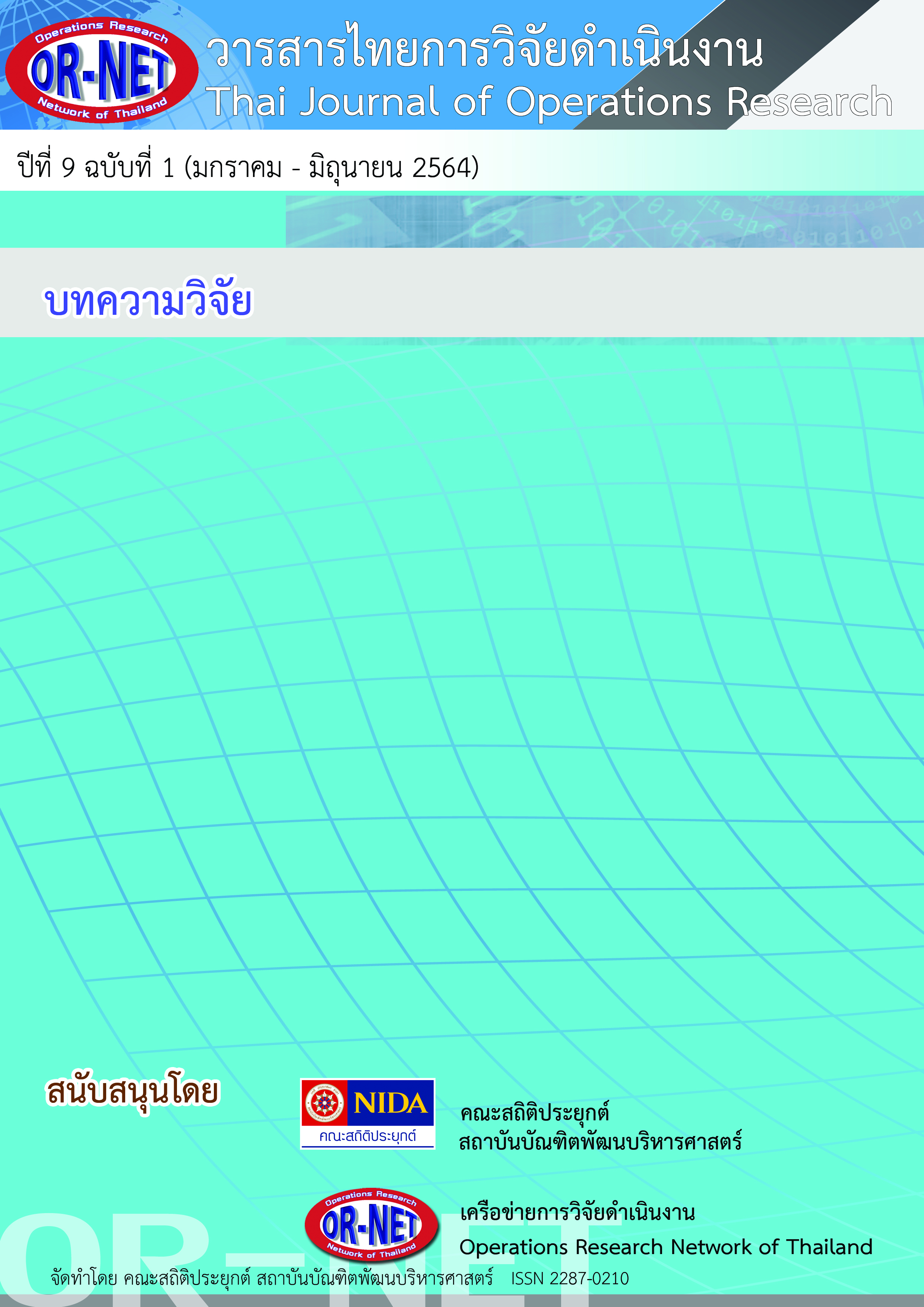A Supervised Learning-Based Supplier Classification Model for Supplier Performance Evaluation Problem in SAP ERP
Keywords:
Supplier Evaluation, Supplier Classification, Machine Learning, Case Study, SAP ERPAbstract
The purpose of this research is to develop a supplier classification framework for supplier evaluation problem for overcoming the uncertain results from embedded linear scoring methods in SAP ERP. Datasets in this study are Purchase Order (PO) and Purchase Requisition (PR). PO data is used for modelling supplier classification models, and PR is used as an input data to evaluate the suppliers’ performances before making purchasing contracts. Three evaluation criteria, which are developed by interviewing with experts are quantity, quality, and delivery commitment. In addition, this research is developed the data extraction algorithm from SAP ERP system and data transformation in order for designing suitably datasets for supplier classification models. Nine classification models: Naïve bay, K-Nearest Neighbors, Support Vector Machine, Logistic Regression, Adaboost, Decision Tree, Random Forest, and Stacking SVM+DT and Stacking SVM+LR are applied to compare the performances to find the best classification model. In the analysis schemes, all material groups and each material group as suggested two levels of analysis are proposed in this study. Results show that Adaboost is the best classification model in both train and test datasets. Furthermore, Adaboost is also outperform others for both levels of analysis with accuracy performances for all material group (81.6%) and each material group (67.6), respectively.
References
[2] ศุภลักษณ์ ใจสูง. “การคัดเลือกผู้ให้บริการโลจิสติกส์ของบริษัท ฮานา ไมโครอิเล็คโทรนิค จำกัด (มหาชน) โดยใช้กระบวนการตัดสินใจแบบวิเคราะห์ลำดับชั้น (AHP)” วารสารบริหารธุรกิจ มหาวิทยาลัยธรรมศาสตร์., ปีที่ 35 ฉบับที่ 134 หน้า 65-89, 2555.
[3] สุรพงค์ เอื้อวัฒนามงคล. (2561). การทำเหมืองข้อมูล. พิมพ์ครั้งที่
2. โรงพิมพ์แห่งจุฬาลงกรณ์มหาวิทยาลัย. สำนักพิมพ์
สถาบันบัญฑิตพัฒนบริหารศาสตร์.
[4] อัครนันท์ พงศธรวิวัฒน์, จรุงรัตน์ วรรณสิทธิ์ และ ชวลิต จีนอนันต์
(2563). ตัวแบบการตัดสินใจเชิงภาษาแบบ 2-Tuple สำหรับปัญหาการตัดสินใจแบบหลายเงื่อนไข กรณีศึกษาการ คัดเลือกผู้ให้บริการโลจิสติกส์สำหรับอุตสาหกรรมเบเกอรี่ Journal of Applied Statistics and Information Technology, 4(2), 31-45.
[5] Ahmad Abdulla. “Weighting the key features affecting supplier selection using machine learning techniques” Faculty of Engineering, Misurata University, Libya
[6] Alireza F., Atefeh A., Jurgita A., Morterza Y. “Nonlinear
genetic-based model for supplier selection: A
comparative study” Technological and Economic
Development of Economy, 2017, 23(1): 178-195
[7] Hamed Taherdoost, Aurelie Brard. “Analyzing the
Process of Supplier Selection Criteria and Method”
Procedia Manufacturing 32 (2019) 1024 – 1034
[8] Ian M. Cavalcante. “A supervised machine learning approach to data-driven simulation of resilient supplier selection in digital manufacturing” International Journal of Information Management 49 (2019) 86–97
[9] Kunal Thakkar et al. “AHP and Machine learning techniques for wine recommendation” International of computer science and information technologies, Vol.7(5), 2016, 2349-2352
[10] Manu Kohli. “Supplier Evaluation Model on SAP ERP Application using Machine Learning Algorithms” International Journal of Engineering & Technology, 7 (2.28) (2017) 306-311
[11] Orange Data Mining. ค้นเมื่อ 1 ธันวาคม 2563, จาก
https://orangedatamining.com/
[12] Pongsathornwiwat, N., Huynh, V. N., & Jeenanunta, C.
(2017). “Developing evaluation criteria for partner
selection in tourism supply chain
networks” International Journal of Knowledge and
Systems Science (IJKSS), 8(1), 39-52.
[13] Pongsathornwiwat, N., Huynh, V. N., Theeramunkong, T.,
& Jeenananta, C. (2016, July). “A linguistic partner
evaluation model in tourism supply chain networks”
In 2016 IEEE International Conference on Fuzzy Systems
(FUZZ-IEEE) (pp. 1051-1058).
[14] Roger Dingledine. Richard. “Use of Support Vector Machines for Supplier Performance Modeling” Reputation Technologies, Inc.
[15] Splitting a Dataset into Train and Test Sets ค้นเมื่อ 6
กุมภาพันธ์ 2564, จาก https://www.baeldung.com/cs/train-
test-datasets-ratio
[16] Vincent H Wilson, Arun Prasad N S, Aswin Shankharan,
Sushant Kapoor, John Rajan A. “Ranking of supplier
performance using machine learning algorithm of
random forest” International Journal of Advanced
Research in Engineer and Technology (IJARET) 11 (2020)
299-308




